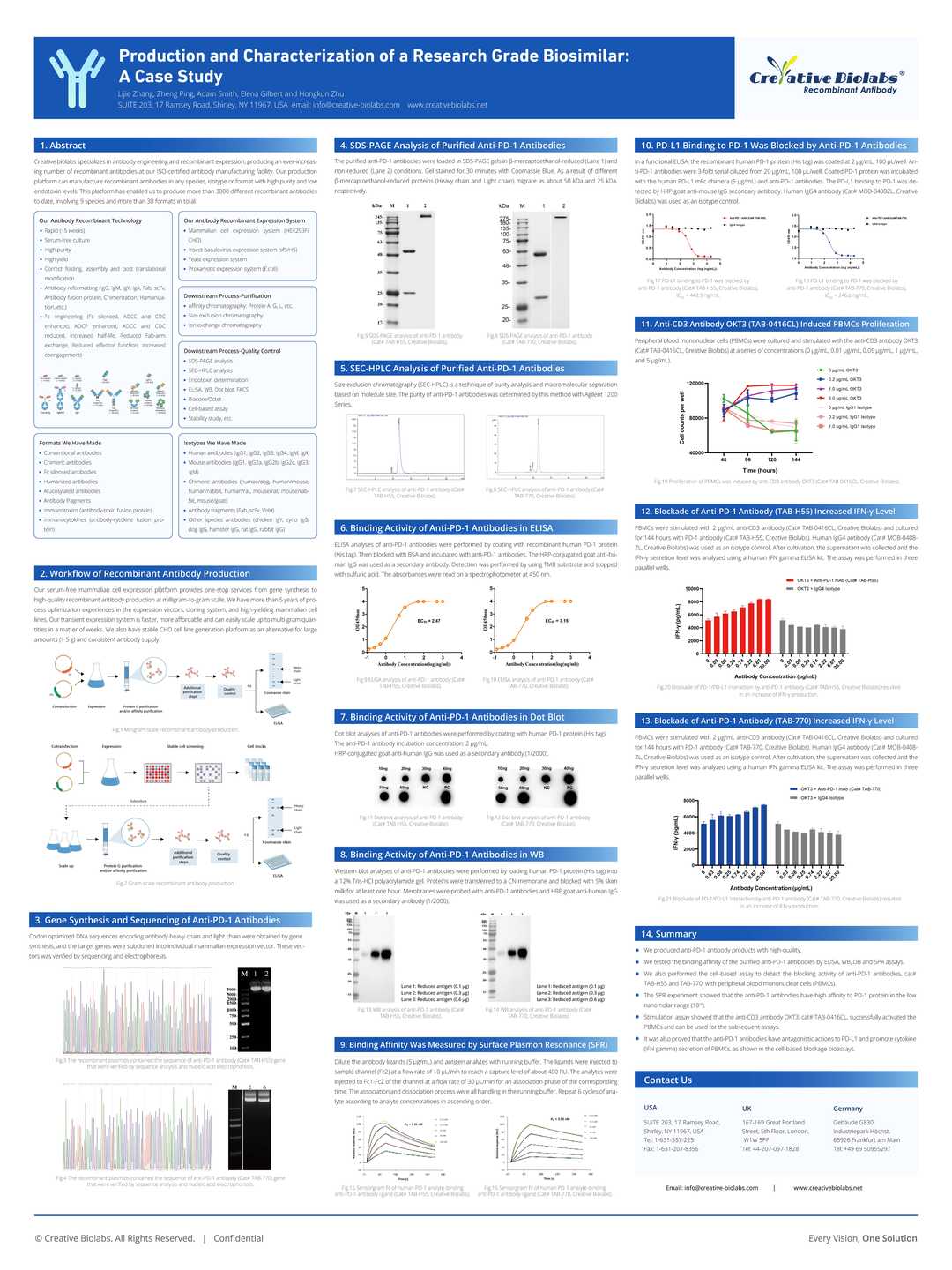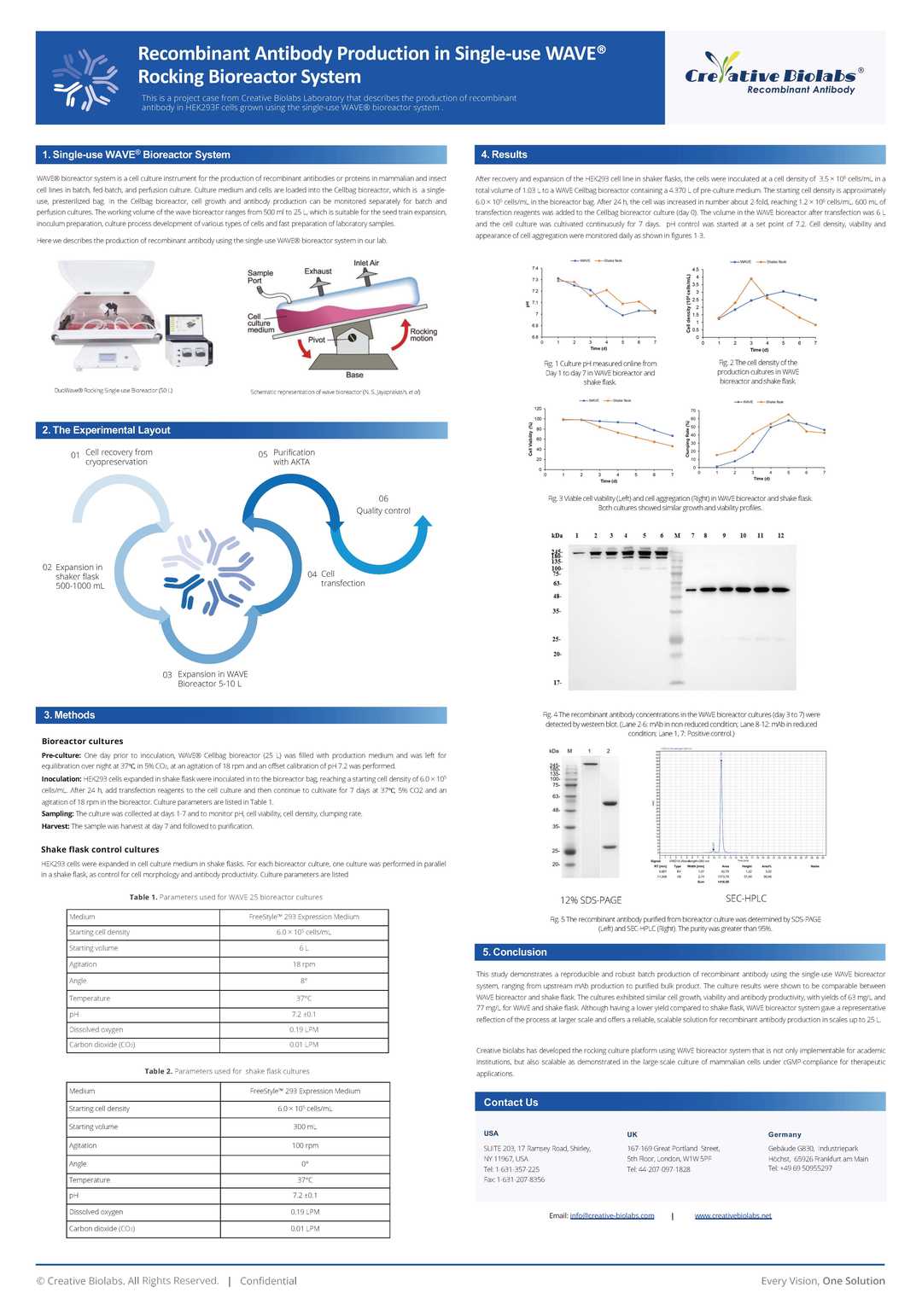Recombinant Rabbit Anti-TFEB Antibody (clone R05-0D7)
CAT#: VS3-FY1439
This product is a recombinant rabbit antibody that recognizes TFEB. This antibody has been reported for use in Western Blot, Immunohistochemistry-Frozen, Immunohistochemistry-Paraffin, Immunocytochemistry, Immunofluorescence, Immunoprecipitation. The clone R05-0D7 is specific for human TFEB. The antigen is human tfeb recombinant protein.


Specifications
- Immunogen
- Human TFEB recombinant protein.
- Host Species
- Rabbit
- Type
- Rabbit IgG
- Specificity
- Human TFEB
- Species Reactivity
- Human
- Clone
- R05-0D7
- Applications
- Western Blot, Immunohistochemistry-Frozen, Immunohistochemistry-Paraffin, Immunocytochemistry, Immunofluorescence, Immunoprecipitation
- Conjugate
- Unconjugated
- MW
- Calculated MW: 53 kDa; Observed MW: 65-70 kDa
Product Property
- Purification
- Affinity Purified
- Purity
- >95% as determined by SDS-PAGE
- Buffer
- 50 mM Tris-Glycine, pH 7.4, 0.15 M NaCl, 40% glycerol, 0.05% BSA
- Preservative
- 0.01% Sodium azide
- Storage
- Centrifuge briefly prior to opening vial. Store at +4°C short term (1-2 weeks). Aliquot and store at -20°C long term. Avoid repeated freeze/thaw cycles.
Applications
- Application Notes
- Western Blot: 1/500-1/1000
Immunohistochemistry-Paraffin: 1/50-1/100
Immunofluorescence: 1/50-1/200
Immunoprecipitation: 1/20
Target
- Alternative Names
- Transcription Factor EB; Class E Basic Helix-Loop-Helix Protein 35; BHLHE35; T-Cell Transcription Factor EB; ALPHATFEB; TCFEB
- Gene ID
- 7942
- UniProt ID
- P19484
- Sequence Similarities
- Belongs to the MiT/TFE family.
- Cellular Localization
- Cytoplasm, Lysosome, Membrane, Nucleus
- Post Translation Modifications
- Phosphorylation at Ser-211 by MTOR regulates its subcellular location and activity (PubMed:21617040, PubMed:22576015, PubMed:22343943, PubMed:22692423, PubMed:24081491, PubMed:30120233, PubMed:35662396).
When nutrients are present, phosphorylation by MTOR promotes association with 14-3-3/YWHA adapters and retention in the cytosol (PubMed:22576015, PubMed:22343943, PubMed:22692423, PubMed:35662396).
Inhibition of mTORC1, starvation and lysosomal disruption, promotes dephosphorylation and translocation to the nucleus (PubMed:22576015, PubMed:22343943, PubMed:22692423).
Exported from the nucleus in a mTORC1-dependent manner in response to nutrient availability (PubMed:30120233).
Dephosphorylated by phosphatase PPP3CA following Coxsackievirus B3 infection, leading to nuclear translocation (PubMed:33691586).
Alkylated via a non-enzymatic covalent modification (PubMed:35662396).
Itaconate, an anti-inflammatory metabolite generated in response to lipopolysaccharide, alkylates Cys-212, preventing association with 14-3-3/YWHA adapters, thereby promoting nuclear translocation and activity (PubMed:35662396).
Sumoylated; does not affect dimerization with MITF.
(Microbial infection) Cleavage by Coxsackievirus B3 protease 3C after site Gln-60. This non-phosphorylated cleavage product retains its ability to interact with TFEB, TFE3 or MITF and presents impaired transcriptional activity, resulting in disruption of lysosomal functions and increased viral infection.
- Protein Refseq
- NP_001161299.2; NP_001258872.1; NP_001258873.1
- Function
- Transcription factor that acts as a master regulator of lysosomal biogenesis, autophagy, lysosomal exocytosis, lipid catabolism, energy metabolism and immune response (PubMed:21617040, PubMed:22576015, PubMed:22343943, PubMed:22692423, PubMed:30120233, PubMed:31672913, PubMed:35662396).
Specifically recognizes and binds E-box sequences (5'-CANNTG-3'); efficient DNA-binding requires dimerization with itself or with another MiT/TFE family member such as TFE3 or MITF (PubMed:1748288, PubMed:19556463, PubMed:29146937).
Involved in the cellular response to amino acid availability by acting downstream of MTOR: in the presence of nutrients, TFEB phosphorylation by MTOR promotes its cytosolic retention and subsequent inactivation (PubMed:21617040, PubMed:22576015, PubMed:22343943, PubMed:22692423, PubMed:35662396).
Upon starvation or lysosomal stress, inhibition of MTOR induces TFEB dephosphorylation, resulting in nuclear localization and transcription factor activity (PubMed:22576015, PubMed:22343943, PubMed:22692423, PubMed:35662396).
Specifically recognizes and binds the CLEAR-box sequence (5'-GTCACGTGAC-3') present in the regulatory region of many lysosomal genes, leading to activate their expression, thereby playing a central role in expression of lysosomal genes (PubMed:19556463, PubMed:22692423).
Regulates lysosomal positioning in response to nutrient deprivation by promoting the expression of PIP4P1 (PubMed:29146937).
Acts as a positive regulator of autophagy by promoting expression of genes involved in autophagy (PubMed:21617040, PubMed:22576015, PubMed:23434374, PubMed:27278822).
In association with TFE3, activates the expression of CD40L in T-cells, thereby playing a role in T-cell-dependent antibody responses in activated CD4+ T-cells and thymus-dependent humoral immunity (By similarity).
Specifically recognizes the gamma-E3 box, a subset of E-boxes, present in the heavy-chain immunoglobulin enhancer (PubMed:2115126).
Plays a role in the signal transduction processes required for normal vascularization of the placenta (By similarity).
Involved in the immune response to infection by the bacteria S.aureus, S.typhimurium or S.enterica: infection promotes itaconate production, leading to alkylation, resulting in nuclear localization and transcription factor activity (PubMed:35662396).
Itaconate-mediated alkylation activates TFEB-dependent lysosomal biogenesis, facilitating the bacteria clearance during the antibacterial innate immune response (PubMed:35662396).
Customer Review
There are currently no Customer reviews or questions for VS3-FY1439. Click the button above to contact us or submit your feedback about this product.
Submit Your Publication
Published with our product? Submit your paper and receive a 10% discount on your next order! Share your research to earn exclusive rewards.
Downloadable Resources
Download resources about recombinant antibody development and antibody engineering to boost your research.
Product Notes
This is a product of Creative Biolabs' Hi-Affi™ recombinant antibody portfolio, which has several benefits including:
• Increased sensitivity
• Confirmed specificity
• High repeatability
• Excellent batch-to-batch consistency
• Sustainable supply
• Animal-free production
See more details about Hi-Affi™ recombinant antibody benefits.
Datasheet
MSDS
COA
Certificate of Analysis LookupTo download a Certificate of Analysis, please enter a lot number in the search box below. Note: Certificate of Analysis not available for kit components.
Protocol & Troubleshooting
We have outlined the assay protocols, covering reagents, solutions, procedures, and troubleshooting tips for common issues in order to better assist clients in conducting experiments with our products. View the full list of Protocol & Troubleshooting.
Secondary Antibody
- CAT
- Product Name
Isotype Control
- CAT
- Product Name
See other products for "TFEB"
Select a product category from the dropdown menu below to view related products.
| CAT | Product Name | Application | Type |
|---|---|---|---|
| MOB-1543z | Mouse Anti-TFEB Recombinant Antibody (clone 30B6) | WB, ELISA, IF, IP | Mouse IgG1, κ |
| MOB-1545MZ | Recombinant Mouse Anti-Human TFEB Antibody (clone 420D3b) | WB | Mouse antibody |
| VS3-CJ748 | Rabbit Anti-TFEB Recombinant Antibody (VS3-CJ748) | WB, IHC | Rabbit IgG |
| VS-0923-FY144 | Recombinant Mouse Anti-TFEB Antibody (VS-0923-FY144) | ELISA, WB | Mouse IgG1 |
| CAT | Product Name | Application | Type |
|---|---|---|---|
| VS-0325-XY2274 | Anti-TFEB Immunohistochemistry Kit | IHC | |
| VS-0525-XY7191 | Anti-Mouse TFEB Immunohistochemistry Kit | IHC | |
| VS-0525-XY7190 | Anti-Human TFEB Immunohistochemistry Kit | IHC |
Popular Products

Application: FC, IP, ELISA, Neut, FuncS, IF, IHC

Application: WB, FuncS, IF, Neut, ELISA, FC, IP

Application: ELISA, IHC

Application: FuncS, IF, Neut, ELISA, FC, IP, IHC

Application: ELISA, Neut, FuncS

Application: WB, ELISA, FC, IHC, IP

Application: ELISA, FC, WB, FuncS

Application: Neut, FC

Application: WB, ELISA, FuncS, IB, FC, SPR, Apop
-3.jpg)
Application: Neut

Application: Neut, IHC, Activ, FuncS, IF, ELISA

Application: ELISA, WB, Microarray, Block
For research use only. Not intended for any clinical use. No products from Creative Biolabs may be resold, modified for resale or used to manufacture commercial products without prior written approval from Creative Biolabs.
This site is protected by reCAPTCHA and the Google Privacy Policy and Terms of Service apply.

















